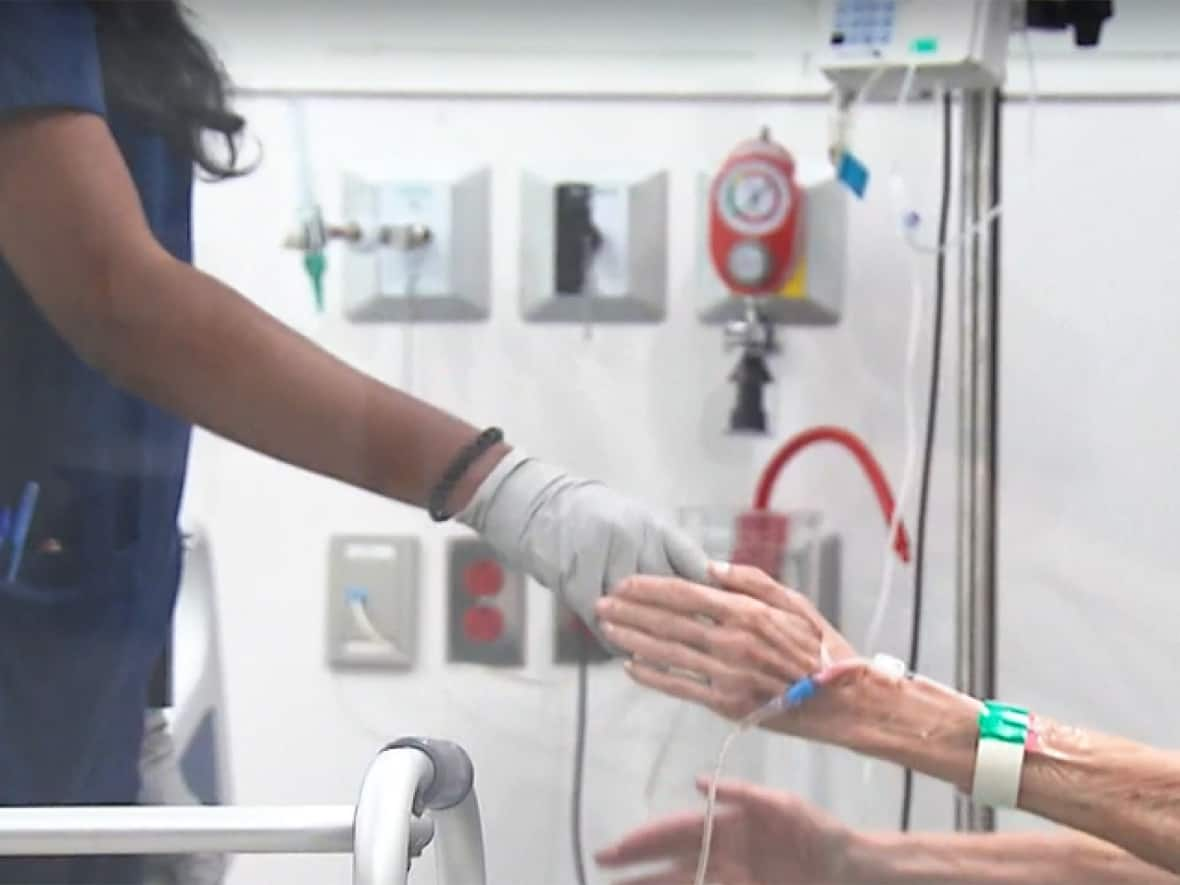Flu kills 8 more in New Brunswick, sends 99 to hospital

The flu killed eight more New Brunswickers, hospitalized 99 and infected at least 607 over the holidays, according to the latest figures from Public Health.
There were also eight lab-confirmed outbreaks reported in nursing homes and "other settings" between Dec. 18 and Dec. 31, and five influenza-like illness outbreaks reported in schools, the influenza report posted Wednesday shows.
Influenza activity has been decreasing in New Brunswick over the past four weeks, said Department of Health spokesperson Adam Bowie.
"While this trend is expected to continue, we should know more after we analyze the data we gather over the next few weeks," he said in an emailed statement.
At the national level, influenza "continues to circulate but has declined sharply" from the peak that occurred at the end of November, the report says. "Most surveillance indicators are decreasing and almost all indicators are within expected levels typical of this time of year."
None of the deaths are youths
No details about the New Brunswickers who died or were hospitalized, such as their ages or any underlying health conditions, are provided in the online report.
But none of the deaths involved infants, children or teens, said Bowie.
"Most of the influenza-related deaths in this flu season (89 per cent) have involved people aged 60 years or older, and most of the influenza-related hospitalizations (55 per cent) involved people aged 65 years or older," he said.
Bowie did not say if or how many of the hospitalizations involved infants, children or teens.
A request for information about youth deaths last week went unanswered.
As of last month, 11 deaths have already been reported among children and teens across the country, compared to a pre-pandemic yearly average of nine, according to research by CBC News.
Some experts say providing timely information about the severity of a communicable disease like the flu can help people protect themselves and in this case, their kids.
'Sporadic' activity
There is now only "sporadic" influenza activity — the second-lowest of four levels — in the Fredericton region, Zone 3, and the Miramichi region, Zone 7, while the five other regions continue to show "localized" activity — the second-highest level.
All seven health regions had localized activity during the previous report, which covered Dec. 11 to Dec. 17.
Sporadic activity is defined as sporadically occurring influenza-like illnesses and lab-confirmed cases with no outbreaks detected within the region.
Localized activity is defined as "evidence of increased [influenza-like illness] with lab-confirmed influenza detection(s) and outbreaks in schools, hospitals, residential institutions and/or other types of facilities occurring in less than 50 per cent of the influenza surveillance region."

Of the 607 new lab-confirmed cases, six were influenza A(H3) viruses, and 601 were influenza A (unsubtyped).
The actual number of flu cases in the province is likely much higher since most people don't get tested for the flu. They simply stay home.
The regional breakdown of the confirmed cases is:
Moncton region, Zone 1 — 144.
Saint John region, Zone 2 — 88.
Fredericton region, Zone 3 — 95.
Edmundston region, Zone 4 — 88.
Campbellton region, Zone 5 — 31.
Bathurst region, Zone 6 — 128.
Miramichi region, Zone 7 — 33.
Outbreaks
The lab-confirmed outbreaks include four nursing homes. The names of the homes are not provided but they are located in the Moncton region, Saint John region, Edmundston region and Bathurst region, the report shows.
There were also four lab-confirmed outbreaks in "other" settings — three in the Edmundston region and one in the Campbellton region. These can include correctional facilities, special care homes, seniors residences, adult residential facilities, assisted living or hospice settings, Department of Health officials have previously told CBC.
Of the five influenza-like illness outbreaks in schools, there was one in each of the following regions: Saint John, Fredericton, Edmundston, Campbellton and Bathurst.
These outbreaks, which are based on absence rates of greater than 10 per cent because of influenza-like symptoms, should be "interpreted with caution," the report notes. The number "might be misrepresented due to the ongoing circulation of COVID-19, since distinction between influenza-like-illness and COVID-like illness is not always evident."
Seasonal totals
Since the beginning of the 2022-23 flu season on Aug. 28, 47 deaths and 809 hospitalizations have been reported in New Brunswick.
By comparison, the province had five flu deaths and 92 hospitalizations all of last season.
A total of 4,145 confirmed cases have been reported this season — 124 influenza A(H3) viruses, 4,020 influenza A (unsubtyped) and one influenza B.
Thirty-five outbreaks have been confirmed, and 211 influenza-like illness school outbreaks have been reported.
The Department of Health recommends the flu shot for all New Brunswickers aged six months and older, with a higher dose available for those 65 or older.
The seasonal influenza vaccine is available free of charge through a variety of immunization providers, including participating pharmacies and Public Health clinics.


